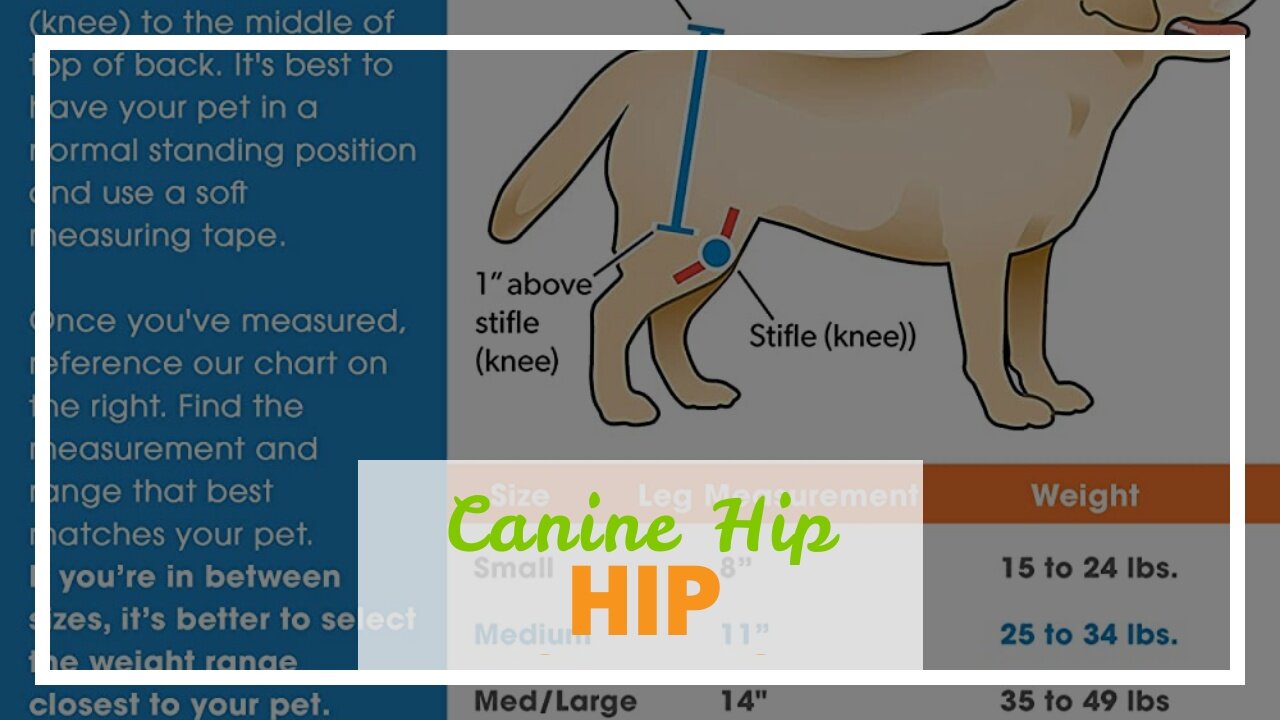Premium Only Content

Canine Hip Dysplasia
Canine Hip Dysplasia
Hip dysplasia is one of many orthopedic conditions that can be affecting dogs. Hip dysplasia can easily be managed in puppies if it is caught early. Even dogs suffering from arthritis due to hip dysplasia may enjoy a better quality of life through medical management or surgical intervention. What is hip dysplasia? Hip dysplasia refers to malformations of the hip joint that occur during puppy’s growth. The hip joint is made up of two parts, the head of the bone (ball) or the acetabulum(socket). The hip joint is also known as a socket and ball joint. The head of the...
Hip dysplasia is one of many orthopedic conditions that can be affecting dogs. Hip dysplasia can easily be managed in puppies if it is caught early. Even dogs suffering from arthritis due to hip dysplasia may enjoy a better quality of life through medical management or surgical intervention. What is hip dysplasia? Hip dysplasia refers to malformations of the hip joint that occur during puppy’s growth. The hip joint is made up of two parts, the head of the bone (ball) or the acetabulum(socket). The hip joint is also known as a socket and ball joint. The head of the femur must grow at the same rate as the acetabulum. This ensures that the ball fits snugly within the socket. Hip dysplasia is characterized by the growth of the head of the hip femur at different rates and the acetabulum at a slower rate, causing laxity in the joint. For an example of how this looks, make a fist using your left hand. This is the head of your femur. Now, place your right hand over your fist. This is the acetabulum. Rotate your fist in your cupped hand to see how the ball of your hip moves naturally within your socket. The acetabulum is not snugly fitting around the ball and femur of a dog or puppy with hip dysplasia. Now, relax your right hand and let your fingers rest so that they don’t pinch your fist. Rotate your right hand and move your fist inside your right hand. Your fist will have a lot more room to move; this is similar to hip dysplasia’s joint laxity. The cartilage that surrounds the ball can collide with the socket’s cartilage in unnatural ways when it moves around in the socket. Your dog’s body will eventually create scar tissue around the edges of the cartilage in order to stabilize the hip joint. The scar tissue is not smooth as cartilage, it is rough and uneven. An arthritic hip joint is one that has scar tissue covering it. An arthritic hip joint can make walking difficult. You may notice lameness in your dog, whether it is chronic or periodic. A dog who has low levels of chronic pain might not be affected by lameness. They may have a shorter stride in their hind legs or atrophied hip muscles due to their inability to fully extend their hips. What causes hip dysplasia Hip dysplasia can be a hereditary condition. It is affected by many environmental factors that occur during the puppy’s growing period. These environmental factors include diet, exercise, growth rate, and nutrition. Hip dysplasia can affect any breed of dog, but it is more common in large breed dogs like Labrador Retrievers and Golden Retrievers. Large breed puppies (anyone who weighs more than 50 lbs as an adult) need to be fed high-quality, large-breed puppy food. Large breed puppies need to be fed a puppy food with a higher level of calcium and protein. This will ensure that their bones develop properly. No matter what size or breed, puppies should be kept thin as they grow. Being overweight places additional strain on the hip joints, and encourages joint laxity. It is important to give your puppy at least two to three meals per day. Follow your veterinarian’s advice on the amount to be fed at each meal. Dogs who are unable to do strenuous exercise, such as going on long runs or long hikes, may develop excessive muscles. This can lead to hip laxity by altering the mechanical forces that affect the joint as it develops. What are the signs and symptoms of hip dysplasia Hip dysplasia can cause puppies to walk with a bunny hop gait. Many puppies with hip dysplasia do not show any signs of lameness, gait abnormalities, or other obvious signs. Dogs with hip dysplasia may experience lameness as they age, may have difficulty climbing stairs and may slow down when they are able to get up from a laying or sitting position. Hip dysplasia is not the only cause of...
-
 1:04:01
1:04:01
Timcast
3 hours agoTrump Just NUKED Global Economy, Tariffs Ignite Trade War, Markets COLLAPSING
157K137 -
 1:54:08
1:54:08
Steven Crowder
5 hours agoLiberation Day: How Trump's Tariff Strategy will Reset the Global Order
354K215 -
 1:58:23
1:58:23
The Charlie Kirk Show
3 hours ago“Liberation Day” Reaction + Military Standards + Tariff History | Thibeau, Hanson | 4.3.25
74.1K15 -
 LIVE
LIVE
SternAmerican
1 day agoIntegrity in Action call With Steve Stern and Raj Doraisamy Thursday, April 3rd at 2:00PM EST
661 watching -
 1:39:41
1:39:41
Rebel News
2 hours ago $1.89 earnedTrumps new global tariffs, Poilievre and Carney respond, Tamara Lich verdict | Rebel Roundup
26.4K6 -
 1:06:19
1:06:19
TheAlecLaceShow
3 hours agoTrump Tariffs Take Effect | Alec Lace in the Rose Garden | Guest: Jim Pfaff | The Alec Lace Show
17.9K1 -
 LIVE
LIVE
Major League Fishing
2 days agoLIVE! - MLF Bass Pro Tour: REDCREST - Day 1
4,414 watching -
 LIVE
LIVE
Viss
3 hours ago🔴LIVE - How to Continuously Stack Win in Solo PUBG!
258 watching -
 59:50
59:50
The Rubin Report
4 hours agoEconomist Destroys Jon Stewart’s Narrative w/ Facts in Only 3 Minutes
65K27 -
 1:40:46
1:40:46
Flyover Conservatives
14 hours agoThe Tariffs Are HERE — How Will This Affect You?!; 44,000 COVID Tests, 19,000 Patients - Dr. Michael Schwartz | FOC Show
30.6K5